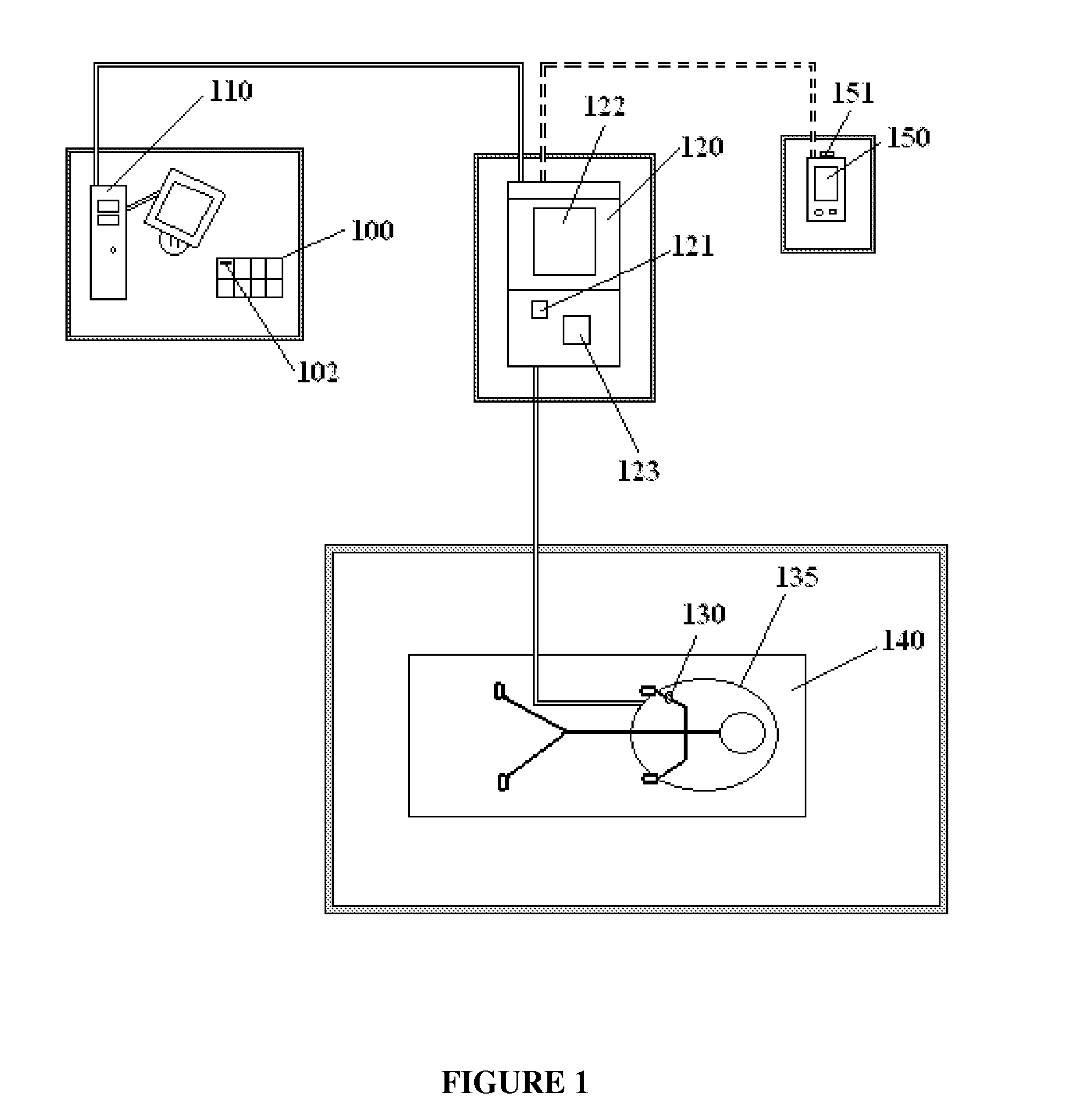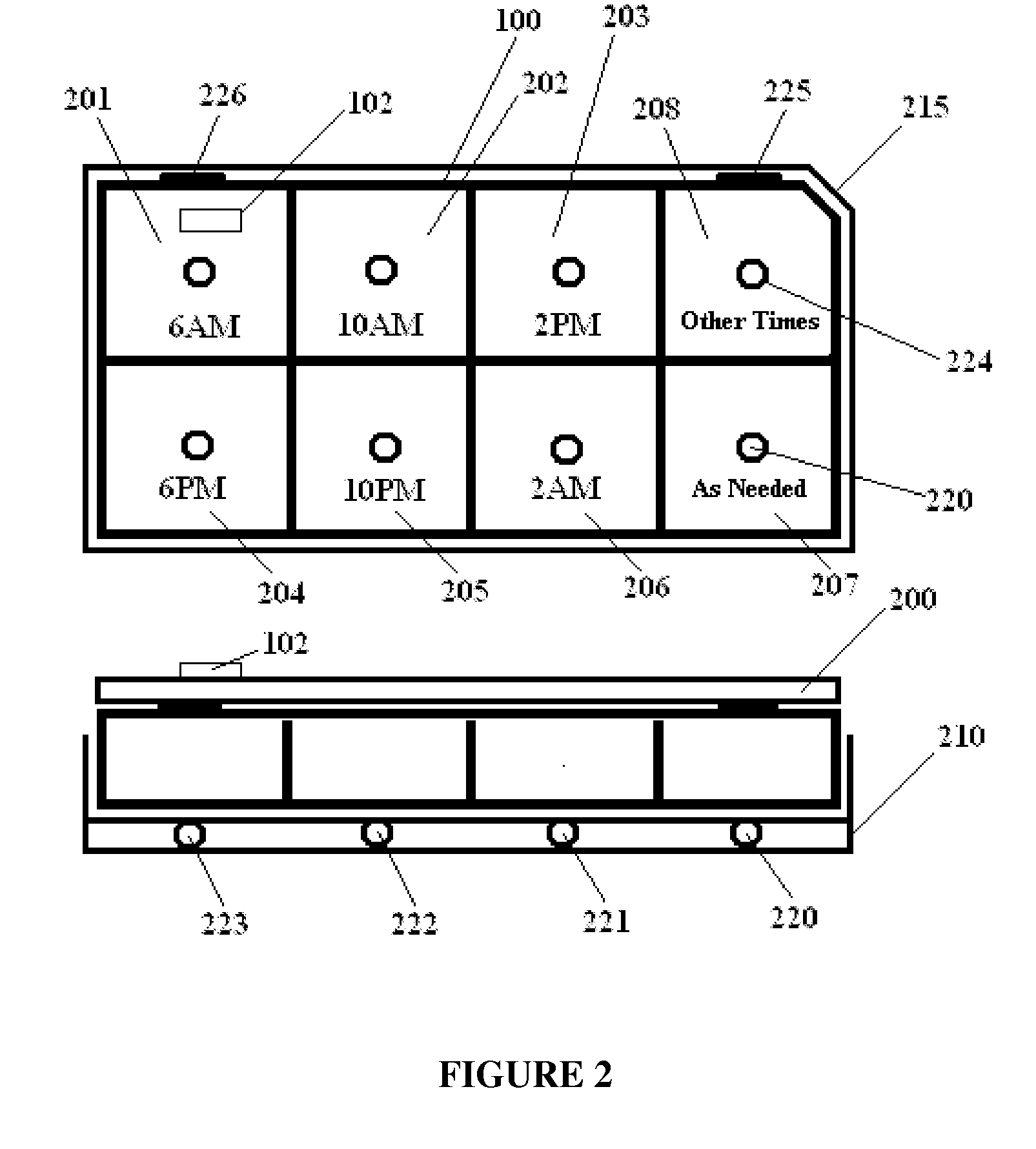Healthcare workstations and RFID devices for detecting medication errors, falls and wandering
a technology for workstations and alarm systems, applied in the field of health care workstations, can solve the problems of affecting the delivery of drugs, affecting the delivery of medications, so as to reduce the likelihood of passing infectious organisms and facilitate the delivery of medications
- Summary
- Abstract
- Description
- Claims
- Application Information
AI Technical Summary
Benefits of technology
Problems solved by technology
Method used
Image
Examples
Embodiment Construction
[0034]FIG. 1 is a block diagram illustrating communications between an attendant workstation 120, a pharmacy computer 110, an RF antenna and transceiver circuit 135 inside or under the patient's mattress, and an attendant's wireless communication device 150. Most institutions will also want hardwired communications with a nurses' station or other central monitoring station computer, which is not shown. A computer associated with the workstation 120 also communicates with RFID devices inside the patient's room that detect medication errors, falls, bed egress and room egress (i.e. wandering).
[0035]FIG. 2 illustrates an RFID pillbox 100 with separate compartments 201-208 for pills, and pillbox lights 220 under each compartment that show pharmacy workers where to insert each prescribed medication.
[0036]FIG. 3 illustrates the pharmacy computer 110 helping pharmacy workers find a storage box 315, where a prescribed medication is stored. A blinking cabinet light 325 indicates the quantity ...
PUM
 Login to View More
Login to View More Abstract
Description
Claims
Application Information
 Login to View More
Login to View More - R&D
- Intellectual Property
- Life Sciences
- Materials
- Tech Scout
- Unparalleled Data Quality
- Higher Quality Content
- 60% Fewer Hallucinations
Browse by: Latest US Patents, China's latest patents, Technical Efficacy Thesaurus, Application Domain, Technology Topic, Popular Technical Reports.
© 2025 PatSnap. All rights reserved.Legal|Privacy policy|Modern Slavery Act Transparency Statement|Sitemap|About US| Contact US: help@patsnap.com



